Dateline: 1926. Deep within the timeless sands of ancient Egypt, a most peculiar discovery has been unearthed… long believed to be only a legend, the burial place of the high priest Imhotep is indeed real… and its sole inhabitant isn’t content staying dead for another three thousand years…
Here at Park Lore, we’ve taken our globetrotting to the extreme with our new series, Modern Marvels, where we uncover the details behind some of the world’s must-see masterpieces of themed entertainment, thrills, and technology.
And today, we’ll unearth the in-depth experience of another spectacular hit ride: Revenge of the Mummy at Universal Studios Florida. We’ll dust away the sands of time and reveal the story behind this “psychological thrill ride,” get a first-person idea of what awaits inside the mummy’s tomb, and even see where this unexpected E-Ticket has been adapted around the globe. Ready to dive in?
And before we head off, remember that you can unlock rare concept art and audio streams in this story, access over 100 Extra Features, and recieve an annual Membership card and postcard art set in the mail by supporting this clickbait-free, in-depth, ad-free theme park storytelling site for as little as $2 / month! Become a Park Lore Member to join the story! Until then, let’s start at the beginning…
Unearthed
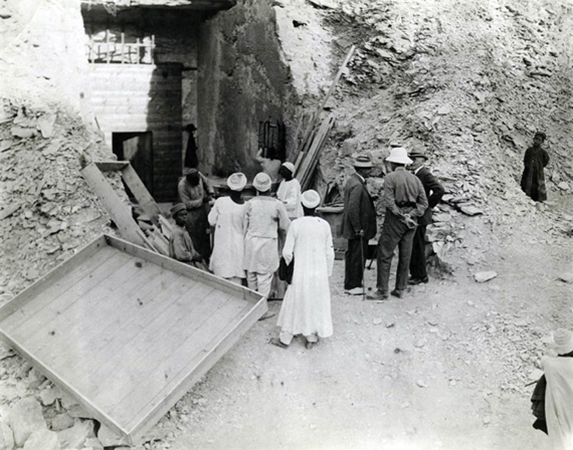
It was in 1922 that Howard Carter – noted British archaeologist and leading Egyptologist – led an unprecedented search for the tomb of the lost pharaoh Tutankhamen, young ruler of Egypt’s New Kingdom. “King Tut” is thought to have ruled between about 1332 – 1323 B.C. – nearly three thousand years ago. The discovery of Tut’s tomb (official Egyptological designation KV62) by Carter and company is remembered today as one of the greatest archaeological discoveries in modern history.
It’s also noteworthy for two reasons:

- Tut’s tomb was largely intact… a sincere rarity in the Valley of the Kings, where millennia of pillagers and raiders had desecrated most burials. (Archaeologists suggest it had been breached only twice, and its inner chambers remained sealed up unto Carter’s entry);
- Almost every member of Carter’s team died by mysterious, unexpected, and oftentimes violet means in the years following their entry to the tomb. Plagued by unidentifiable disease, uncharacteristic suicide, acts of God, and seemingly random violence, the sensationalized media of the era quickly picked up on a headline: a “curse of the Pharaohs” was striking down any who had dared enter the burial chamber protected by ancient magic.
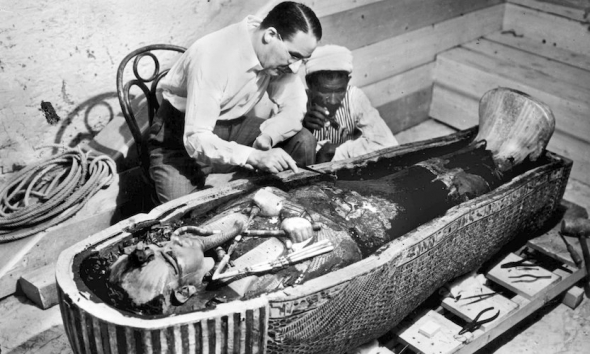
Of course, no one can say whether the opening of Tut’s tomb really unearthed an ancient curse determined to seek vengeance on any who disturbed the pharaoh’s resting place… but we do know that the sandstorm of media coverage ignited a global interest in Egyptology and, particularly, the mysticism and mythology of the ancient Nile Valley.
From Screams to Screens

To be clear, one person who was intently watching the hysteria surrounding the decade-long effects of the “curse” was Carl Laemmle Jr., son and namesake of the founder of Universal Studios. The junior Laemmle took over as head of the studio’s production in 1928 (at the tender age of 20, mind you) where he heralded in the age of the “talkie” that his father had helped shape.
But it was in 1931 that the future of Universal fell to the young moviemaker. That year, Universal debuted two pre-code horror films that would shape the studio forever: the definitive and still-celebrated versions of Dracula (starring Bela Lugosi) and Frankenstein (with Boris Karloff as the mad scientist’s monster). Together, the two movies had turned around Universal’s sinking finances, and that meant that more monster movies were assured.
Laemmle tasked his team with creating a third creature feature: The Mummy.
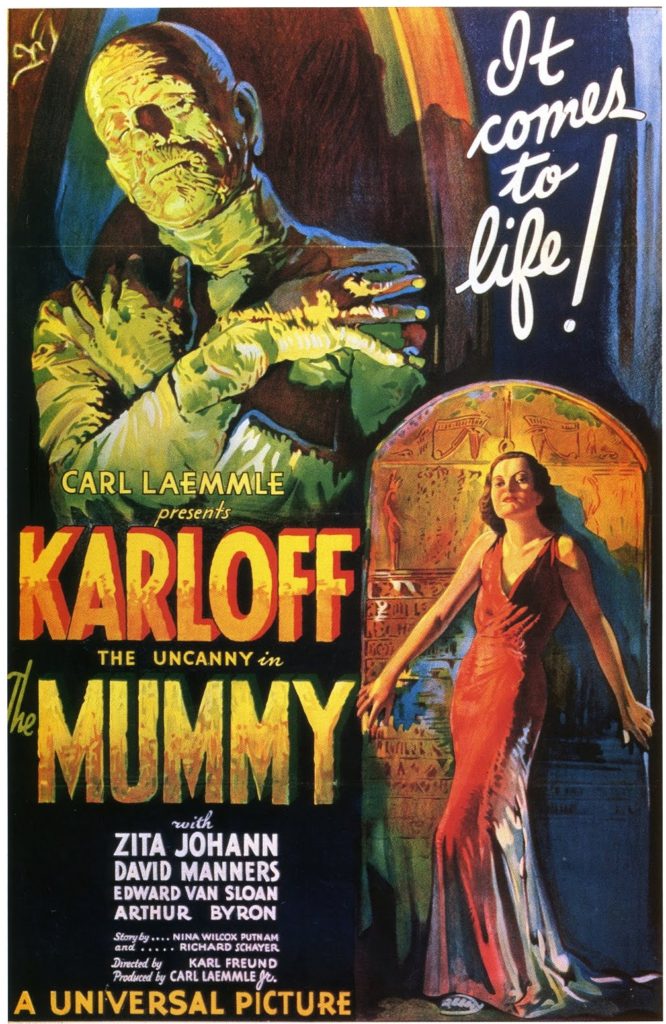
The film, debuting just a year later in 1932, cast Boris Karloff once more as Imhotep, a recently unearthed Egyptian priest accidentally revived by a British archaeological expedition reading from the long-lost Scroll of Thoth. Imhotep, set free upon the Earth, scours the globe hell-bent on finding the modern reincarnation of his forbidden lover – princess Ankh-es-en-Amon – so that he can kill, mummy, and reanimate his lost love.
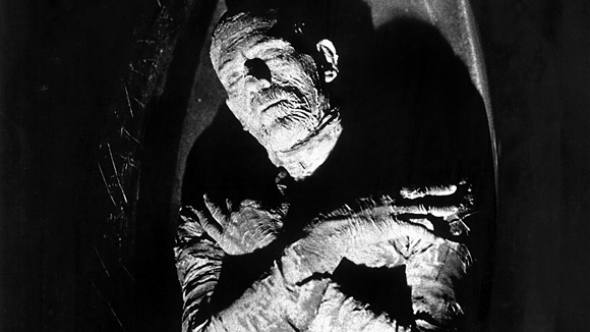
Of course, the film (with Dracula and Frankenstein) would complete the original talking picture trifecta of Universal Horror. In the next decades, The Wolf Man, Bride of Frankenstein, The Invisible Man, Creature from the Black Lagoon, and countless more joined in turn, creating a headlining and unstoppable lineup of Universal Monsters that’s still revered today as some of the most legendary creations of Universal Studios.
Studio Wars
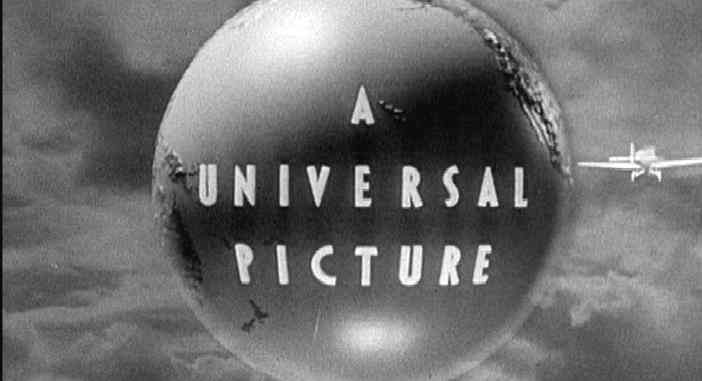
Though Universal Studios opened in 1912 (a full decade before the discovery of Tut’s tomb), the first tours of the Hollywood studios’ backlot began in 1915. Despite the popularity of the five-cent tour (which included a boxed lunch), by time production had begun on Universal’s Mummy in the early 1930s, the tours had gone dark.
The advent of sound films required closed, quiet sets, forcing Universal to end its public tours. As a result, Universal’s backlot was off limits to the public for more than three decades.

In 1964, Universal Studios Hollywood reopened its gates with an old new draw: the Studio Tour, a tram-led multi-hour experience, whisking guests through real production facilities, hot sets, and famous backlots where authentic Hollywood classics have been shot.
And by the ‘70s and ‘80s, the tour was increasingly home to equally-dazzling staged encounters… like a robotic face-to-face with the menacing great white from Jaws, a special effects extravaganza as riders relived Earthquake – The Big One, and (most famously) a banana-breathed face-to-face with the dreaded King Kong.
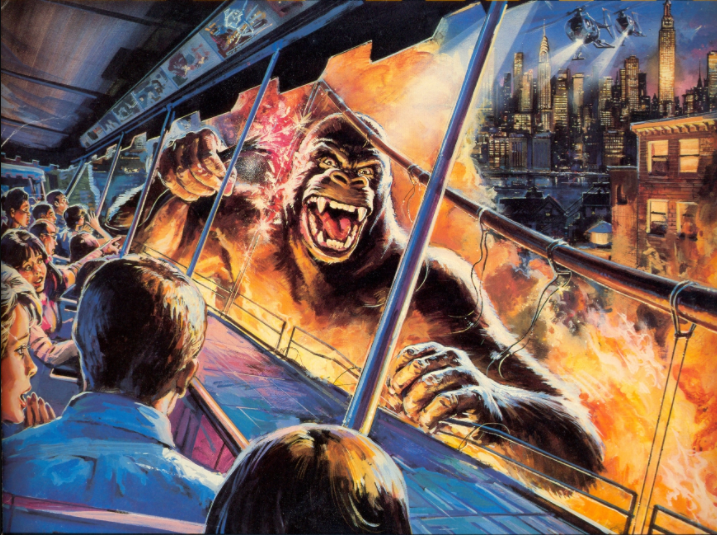
For the better part of the 1980s, Universal had been considering a Florida-based studio park that would doubtlessly be headlined by its own Studio Tour with similarly extravagant encounters, but it wasn’t until Steven Spielberg’s backing and the concept of Back to the Future: The Ride that executives seriously considered building a theme park in Disney World’s back yard. Plans began to creep forward and a Universal Studios Florida was assured.
But then, in 1984, Michael Eisner became the CEO of Walt Disney Productions. Eisner – fresh from his post as CEO of Paramount Pictures – was intimately aware of the film industry and set out to revive Disney’s aging studios and forgotten animation divisions. But he also foresaw film as the way to enliven Disney’s tired theme parks.
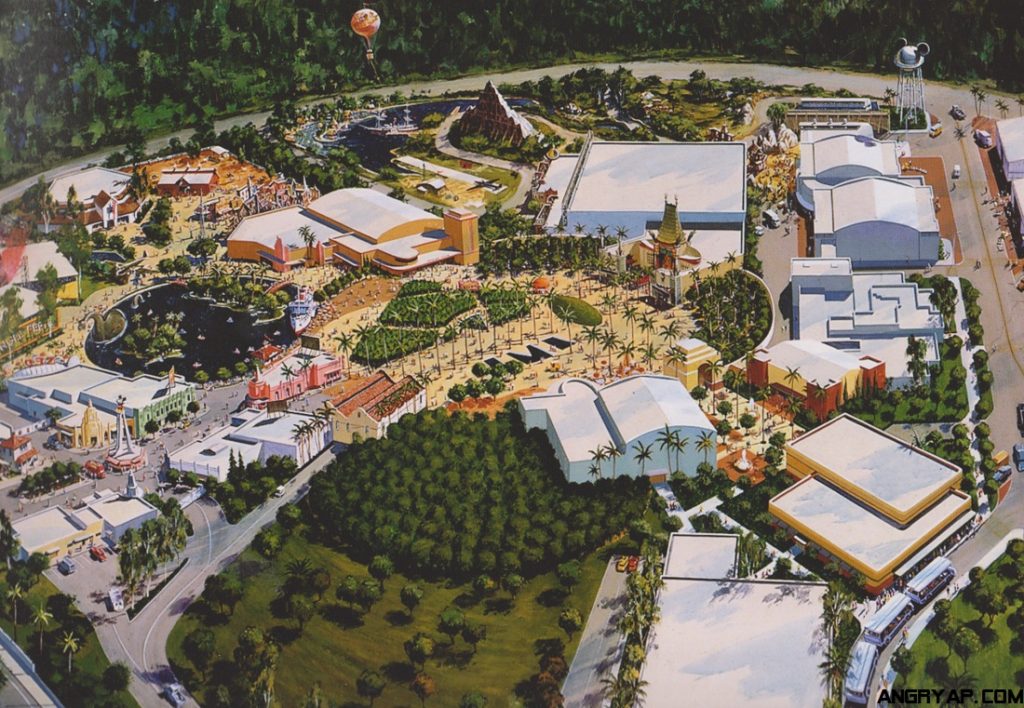
If you ask insiders, Eisner knew about Universal’s plans for a Floridian movie park from his time at Paramount, and underhandedly cut them to the quick… And indeed, Disney announced their own movie studio park – The Disney-MGM Studios – as a preemptive strike to dissuade Universal from building in Orlando.
Disney even went so far as to steal Universal’s bread and butter – a multi-hour tram-led Studio Tour – as their studio park’s major attraction.
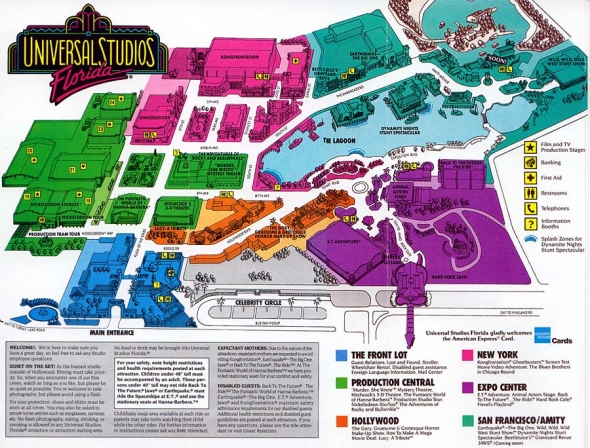
Truthfully, Eisner and company probably expected Universal to limp away from the land they’d purchased in Florida, bruised. Instead, designers rallied and pressed ahead with Universal Studios Florida. Since they couldn’t steal back their own Studio Tour concept, Universal’s creatives instead took the components of the Hollywood park’s Studio Tour and split them into full-fledged, standalone, E-Ticket experiences… Up-close encounters with Jaws, King Kong, Earthquake, Back to the Future, and more, now built-out into full attractions of their own.
Kong Encounter
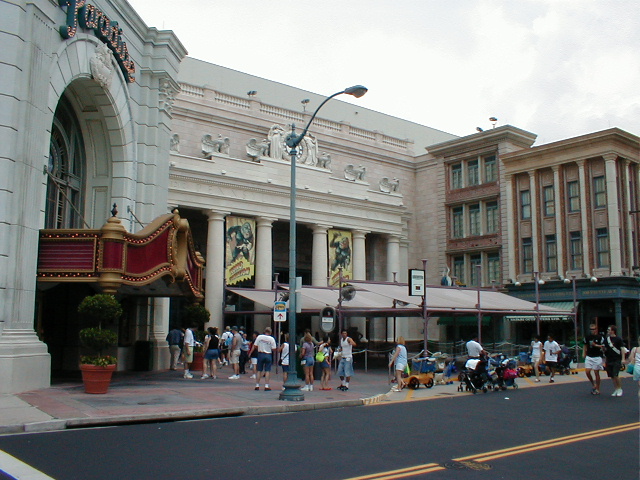
Take, for example, Kong. When Universal Studios Florida opened in 1990, the great ape that had debuted in 1933’s King Kong was given his own dedicated attraction, housed in the park’s New York streets behind the towering white marble exterior of Penn Station.
Once inside, guests were transported to the grimy, gritty, graffiti-covered innards of New York City’s subway system (it was the 1980s, after all), where live newsfeeds signaled something unimaginable: a giant, raging, insane ape was terrorizing the Lower East Side! Naturally, evacuations of town are underway, and as for us? Our only means of escape is the elevated Roosevelt Island Tramway that can get us over the Hudson River and to safety.
This was all to set the stage for a wild E-Ticket adventure that would impress even Disney’s Imagineers… In true cinematic form, Universal’s designers built entire New York City blocks six stories tall in all directions, positioning guests in suspended trams to glide through the carnage and destruction, perpetually 30 seconds behind the behemoth Kong.
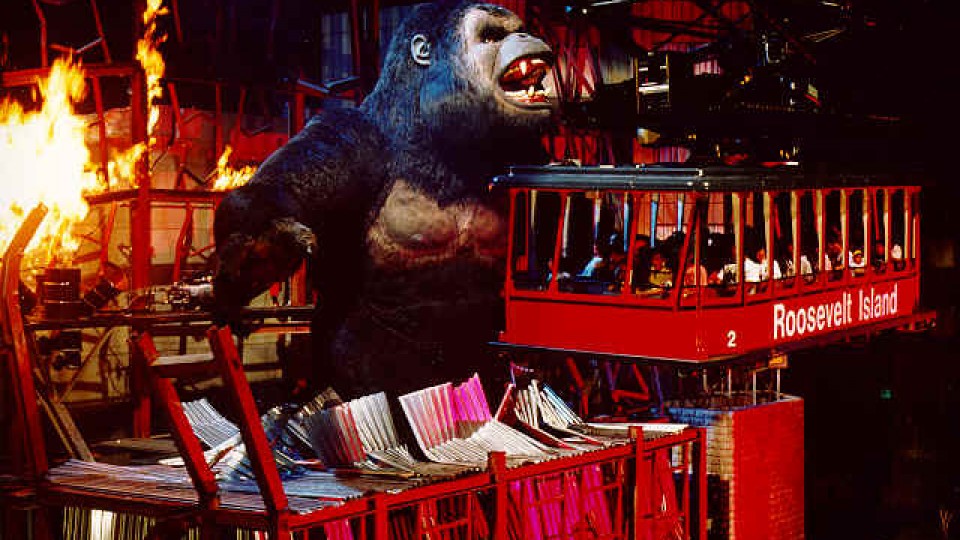
Of course, it wouldn’t be showstopper unless we earned our face-to-face with the raging ape, and Kongfrontation offered two unthinkable encounters with some of the largest, most complex, and most chaotic Audio Animatronics figures ever designed, allowing us to look into the crazed eyes of a giant who just wants to go home.
The scale, size, and scope of the ride were truly unprecedented. That’s why it’ll live on forever with its own dedicated entry here, Lost Legends: Kongfrontation – a sort of prologue to this story. After all, Kongfrontation was a timeless Universal Studios classic… which means, it was doomed… Read on…


